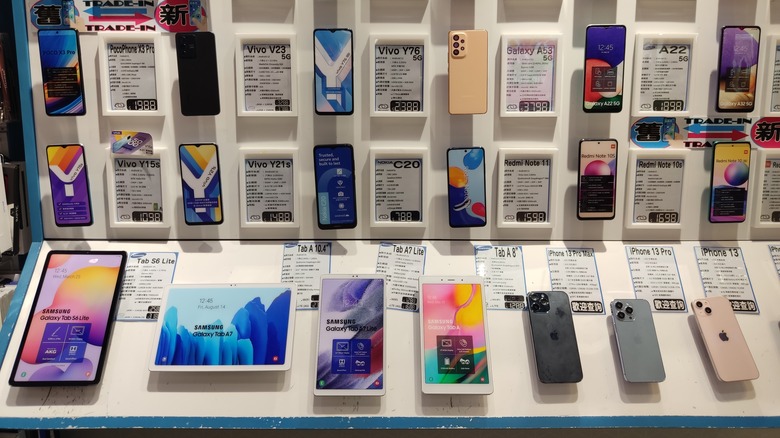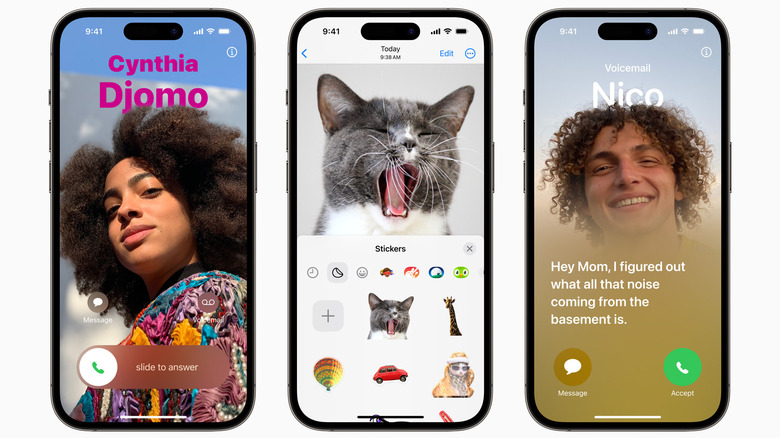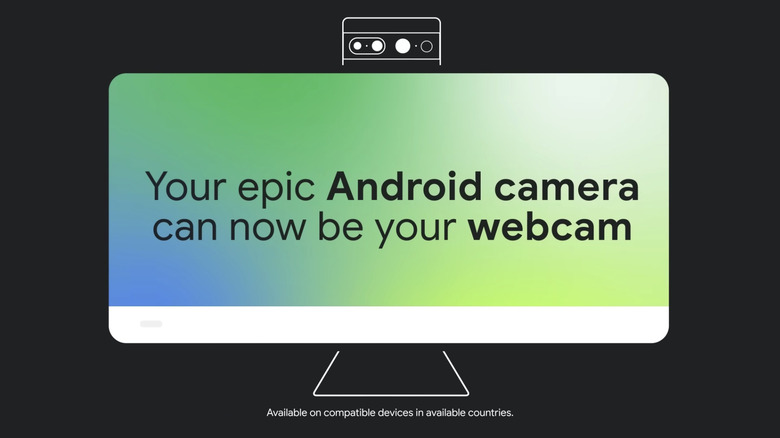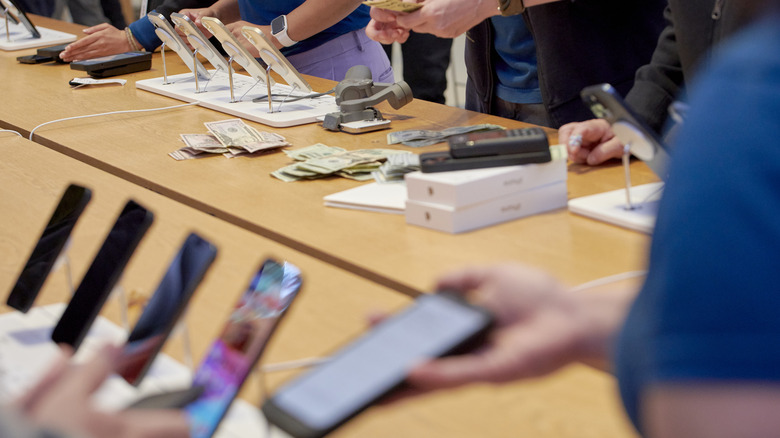Android 14 Vs iOS 17: Who Got The Bigger Upgrade?
Recently, both major mobile phone and tablet operating systems have been refreshed, with Google unveiling the release candidate of Android 14 and Apple pushing out the update to iOS 17. With each update comes various refinements and new features, but as time goes on, there becomes less and less in the way of game-changing features that can be added to a smartphone, both in terms of hardware and software. The differences get more minute, and as a result, it gets harder and harder to determine if iOS or Android has one-upped the other in any significant way.
The only way to do this, at least in terms of comparing the latest major operating system updates, is to look at the new features introduced by both Apple and Google this time out. Strictly on software improvements alone, not necessarily anything dependent on getting a brand new flagship handset, who's added the more demonstrably impressive features? Let's find out.
[Featured image by HSGTLAEHRE 3041 via Wikimedia Commons | Cropped | CC BY-SA 4.0 DEED]
What has Apple added in iOS 17?
Arguably the most interesting new development in iOS 17 is the addition of what Apple has dubbed Live Voicemail, which falls somewhere in between the existing voicemail transcription feature on both platforms and Google's call screening feature on Android. With Live Voicemail, voicemail is now handled on-device, with the iPhone's Neural Engine providing a live transcription and giving you the opportunity to pick up the call when the caller is leaving the voicemail. If you're old enough to remember when answering machines attached to landline phones played the message in real-time, allowing you to screen calls that way, then this is basically a modernized version of that.
On a related note, FaceTime has added audio and video messages that you can leave when the person you're trying to call doesn't pick up. Taken together, it feels like Apple is trying to find ways to bring back some of the positives that old-school landline phone systems have that had long been absent from mobile devices.
Apple also added StandBy, an always-on display mode that activates when the phone is plugged into a charger and placed in landscape orientation, as well as sharing contacts over NFC. But the biggest remaining change that may alter the overall user experience the most is that the autocorrect engine in Apple's keyboard has been completely overhauled. According to Apple's iOS 17 press release, this is thanks to "a comprehensive update with a transformer language model, a state-of-the-art on-device machine learning language model for word prediction — improving the experience and accuracy for users every time they type."
Other than the addition of the new Journal app, which is exactly what it sounds like, those are the major changes.
What has Google added in Android 14?
Android 14, meanwhile, brings a lot of changes that are arguably smaller on the surface but could change the user experience quite a bit. The most intriguing one may be the ability to use your phone's front-facing camera as a webcam for your computer by hooking it up over USB. In some ways, the most important one may be that starting with this update, Android will now encourage users to set six-digit PINs, providing greater security to users.
Most of the changes are on the cosmetic and user interface side, though. Some, like the addition of monochromatic themes, non-linear font scaling, and generative AI wallpaper, are entirely cosmetic, while support for HDR photos goes slightly beyond that. But Android 14 also adds lock screen customization, including custom app shortcuts, allowing you to get where you want to go faster when you unlock your phone. The lock screen customization also allows you to add widgets, and you can let AI handle some of the customization, like prioritizing and enlarging a weather widget when the forecast takes a turn for the worse.
On the data privacy side, Android 14 also adds two notable tweaks. One is the new Health Connect app that is built into the Settings menus and lets you store your health data securely while also being able to securely share it with other apps, like fitness trackers. The update also includes more data-sharing options for when an app asks for permission, as well as notifying you when an app shares your location data with third parties.
Finally, Android 14 also adds "Flash Notifications," the ability to have your phone flash a light when you have pending notifications.
So who delivered the better update?
Deciding which mobile operating system got the bigger upgrade in their latest major updates is tricky: Do you go with the one that got the most notable changes in one shot, or the one that resulted in the better overall product by including the existing features that it built on top of? Realistically, we need to be literal and go with the former.
By that token, iOS 17 is the winner here. Though there aren't a ton of major changes, the two biggest ones are massive. Live voicemail is a complete game changer in terms of how iPhone users can screen calls, and arguably a massive change to the smartphone experience in general. Your mileage may vary, but the caller being of the understanding that they were simply leaving a voicemail is probably a more frictionless solution than Android's call screening bot answering the call. The former is a lot more usable with just about anyone, while the latter could come across as a bit cold and impersonal to people you already have a relationship with.
The autocorrect improvements are the other aspect that makes iOS 17 the bigger iterative change. Even if you want to argue that this is just taking the iPhone to where Android users have been with the arguably superior GBoard for many years, it's still a bigger change to the user experience than anything that Google has added in Android 14. Both are great mobile operating systems, but at least for their loyal longtime users, Apple made the bigger step forward this time out.



